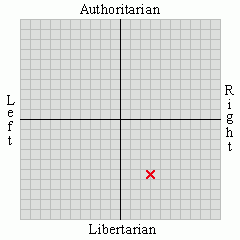The Establishment Clause case I've been keeping my eye on, Salazar v. Buono, will be orally briefed before the Supreme Court today. The case involves a large but not huge Christian cross on a hill located within the Mojave National Preserve. It could be seen in the distance by travelers on Interstate 15. Scotusblog offers a full briefing on the issues. For my part, it's of great interest because:
1. The religious speech in question was originally private, then deeded to the Government. This raises the question of whether the government can "take over" a formerly private act of religious expression.
2. It also raises the question of whether the government can "divest" religious expression with the intent that the religious expression continue. After the Ninth Circuit found that the cross on Federal land violated the Establishment Clause, Congress authorized a land swap giving the cross and a postage-stamp sized piece of land surrounding it to a veteran's group in exchange for a larger plot of land adjacent to the national park where the cross stands. There is no disagreement that a private group can create a cross on its own land as part of its freedom of speech, but the question here is whether Congress' act authorizing the land swap will be seen as a valid action or a tissue intended to keep the cross on display in the Federal territory.
3. It may demonstrate whether there is any viability left to the Lemon test. Lemon was a significant intellectual effort by the Court in the 1970's and 1980's to standardize analysis of Establishment Clause questions, but when the results became politically disagreeable, various Justices (including in some cases even its biggest proponents) simply declined to use the test. As it stands, the Court applies the test when it wishes and disregards it when it wishes, yet as Justice Scalia most colorfully described it, "Like some ghoul in a late night horror movie that repeatedly sits up in its grave and shuffles abroad, after being repeatedly killed and buried, Lemon stalks our Establishment Clause jurisprudence once again, frightening the little children and [government defense] attorneys ... ." Salazar v. Buono might give Scalia the majority vote he needs to pronounce Lemon overruled once and for all -- if he can find a fifth vote for that in Justice Sotomayor.
4. The actual religious expression -- a large cross in the desert -- was originally a memorial to war dead but now its use has been transformed into a locale for an annual religious service at Easter. Does the original intent of the display or its contemporary use govern?
5. As I noted above, Justice Sonia Sotomayor will finally have to undergo an acid test of her real Establishment Clause principles. As I forecast it, she will be the deciding vote in the case. Her previous jurisprudence has not required her to expound new law or opine on existing Establishment Clause law in any significant way. Nor was she examined closely on the issue during her confirmation hearings. While she is thought to be a "liberal" by most self-appointed Supreme Court watchers, generally this only means that she favors affirming Roe v. Wade and its successor Planned Parenthood v. Casey. Abortion and Establishment are decidedly different issues and it could very well be that, for either or both issues, Justice Sotomayor's membership in the RCC may weigh more heavily on her decision-making process than her political background.
6. Finally, there are indications that the Court will focus on the issues of standing and remedy. The plaintiff is a former Federal employee, who is Catholic and does not object to religious symbols generally but lodged a philosophical objection to the use of only a Christian symbol and not those of other religions. He is being represented by the ACLU, which would prefer to argue that the cross simply needs to come down altogether, but it's not clear that would be the appropriate remedy based on the plaintiff's expressed position on the issues. And those Justices who would prefer to see displays of religion or governmental involvement in the same have frequently chosen to attack standing rather than core Establishment Clause issues, most notably and perniciously in the recent case of Hein v. Freedom From Religion Foundation.
So this could be a very pivotal case indeed. A transcript of the oral arguments, I hope, will be available in a day or so from the Supreme Court itself. Audio may be available also. UPDATE: The transcript of the oral argument --58 pages long -- is here.
October 7, 2009
Subscribe to:
Post Comments (Atom)







No comments:
Post a Comment